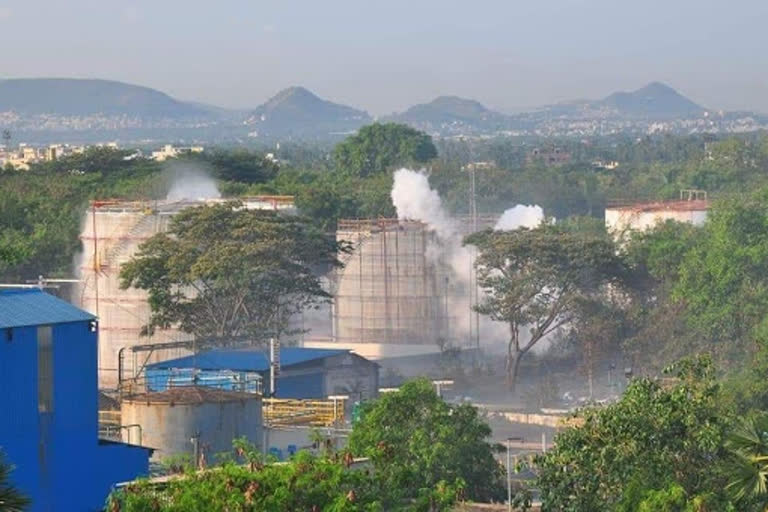New Delhi: Following direction from Prime Minister Narendra Modi an expert team from Pune based Chemical, Biological, Radiological and Nuclear (CBRN) institute on Thursday have rushed to the Vizag gas leakage site in Visakhapatnam where at least 11 people have died and more than 1,000 got affected.
"It's a chemical disaster, and the response requires expertise on chemical side and its management, as well as evacuation side. Prime Minister Narendra Modi took stock of the overall situation and asked to mobilise all support systems to follow the situation," said an official from National Disaster Management Authority (NDMA).
Prime Minister Narendra Modi hold a meeting of NDMA where Home Minister Amit Shah, Defence Minister Rajnath Singh among others were present.
"After the NDMA meeting, the National Crisis Management Committee (NCMC) under Cabinet Secretary reviewed the over all situation," said the NDMA official.
Specialised technical support being mobilised to assist local medical practitioners, the NDMA official said.
It was around 2:30 a.m. on Thursday an incident of gas leakage took place at the LG Polymer plant at Vizag which was 20 km away from Visakhapatnam.
"As many as 11 people so far have died following the incident and more than 1000 came in direct exposure of the leakage," said SN Pradhan, Director General of National Disaster Response Force (NDRF).
Pradhan said that the NDRF initially undertook two tasks including neutralizing the gas inside the factory and evacuation of villagers near the factory site.
"All the people from the site and nearby villages have been evacuated. The leakge had impacted about 3 kilometre radius area where as people within one kilometre came in direct exposure," said Pradhan.
He said that Visakhapatnam based NDRF team dressed in chemical suit entered in the areas and evacuated all people. He said that the effectiveness of the gas (styrene) reduces after 6.5-7 hours.
"The leakage began at 2:30 a.m. The gas has become less effective with the passage of time and it is expected that it's effectiveness will reduce further," said Pradhan.
Talking about the incident, AIIMS Director Dr Randip Guleria said that the gas is a styrene gas and higher level of inhalation of styrene gas can cause breathlessness and respiratory distress.
He, however, said that this will not carry long term impact like Bhopal gas tragedy.
"It's unlikely that styrene will have long term impact. It's heavier than air and there was water spray in the incident site, which might have dissolved the gas," said Guleria.
Guleria informed that it's a toxic gas and injuries to human health.
"It's absorption can lead to headache, nausea, vomiting, unsteadiness of gait. High exposure can also lead people to come, pulmonary edema and irregular heartbeat," Guleria said.
Elaborating further, Dr Guleria said that styrene is an alkaline benzine compound. "Humans come to its exposure by inhalation," he said.
He said that there is no definite medicine to reverse its impact "but there are supportive treatment."
As per initial reports, styrene gas from the plant spread over a radius of about five kilo meters, affecting at least five villages.
"The situation at Vizag is under control now," said SN Pradhan.
Following the incident the government has asked all chemical plants to adhere to the lockdown guidelines specific to chemical factories.
Initially it was reported that the LG Polymer plant at Vizag reopened for the first time on Thursday every since India went to lockdown.
Also Read:visakhapatnam-gas-leak-what-did-lg-polymers-manufacture



